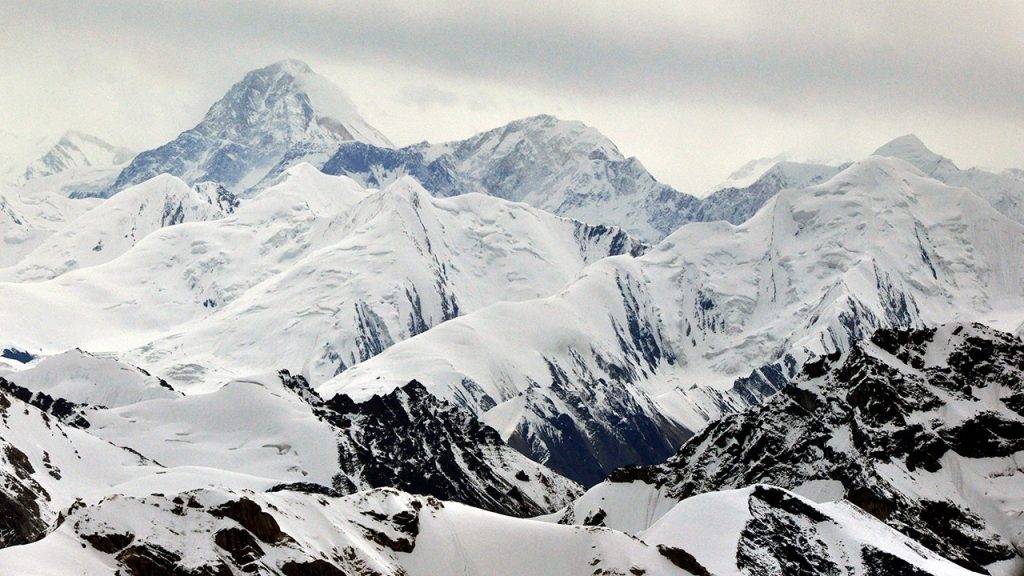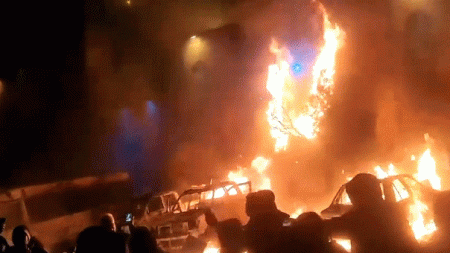A Tragic End to a Mountain Rescue Attempt in Kyrgyzstan
The story of Natasha Nagovitsina, a 47-year-old experienced Russian mountaineer, has come to a heartbreaking conclusion as rescue efforts on Kyrgyzstan’s Victory Peak have been called off. Nagovitsina had been stranded at an elevation of 22,965 feet since August 12 after breaking her leg near the summit of the country’s tallest mountain. This isn’t the first time Nagovitsina has faced tragedy in the mountains; four years ago, she gained recognition for refusing to abandon her husband after he suffered a stroke during a climb. Despite her valiant efforts to save him then, her husband ultimately passed away. Now, nearly two weeks after her own accident on Victory Peak in the Tian Shan Mountain Range along the Chinese border, rescuers have been forced to suspend their mission under increasingly dangerous conditions. For perspective, Victory Peak stands at 24,406 feet, making it a formidable challenge even for the most skilled climbers, though still well below Mount Everest’s towering 29,032 feet.
The rescue attempt has already claimed one life—Italian climber Luca Sinigaglia, who died of hypothermia on August 15 after heroically reaching Nagovitsina’s position. Before succumbing to the extreme conditions, Sinigaglia managed to provide her with essential supplies including a tent, sleeping bag, food, water, and a gas cooker. His sacrifice highlights the extreme dangers faced by both climbers and rescuers in such remote, high-altitude environments. Other rescue attempts have met with similar difficulties and failures. Multiple ground-based climbing teams have been unable to reach her, and two helicopter missions ended in disaster, including one involving a defense ministry helicopter that crashed, leaving four people injured.
The final rescue attempt had to be abandoned approximately 3,000 feet below Nagovitsina’s position when weather conditions deteriorated significantly. Rescue leader Dmitry Grekov expressed his somber assessment of the situation, stating that he believed it was “unrealistic” for Nagovitsina to still be alive after so many days at such an extreme altitude. “I think not, because she has been there since 12 August—count how much time has passed,” Grekov said. “It is unrealistic. It is unrealistic to survive at such an altitude.” His words reflect the grim reality of high-altitude survival, where oxygen is scarce, temperatures are brutally cold, and the human body rapidly deteriorates.
Technology provided a brief glimmer of hope when a drone that flew over Nagovitsina’s shelter confirmed she was still alive as of Tuesday. However, that hope was extinguished when a subsequent drone flight on Thursday showed no signs of life as temperatures plummeted to as low as minus 9 degrees Fahrenheit. The extreme cold, combined with the oxygen-deprived environment above 22,000 feet—an area mountaineers call the “death zone” because human life cannot be sustained there for extended periods—presented insurmountable survival challenges. Even with the supplies provided by Sinigaglia, the combination of her injury, the altitude, and the prolonged exposure to extreme elements made survival virtually impossible beyond a few days.
This tragedy underscores the inherent risks of high-altitude mountaineering, where even the most experienced climbers can find themselves in life-threatening situations with limited rescue options. Victory Peak, like many of the world’s tallest mountains, presents unique challenges for rescue operations. Its remote location, extreme weather conditions, and dangerous terrain make conventional rescue methods extraordinarily difficult. Helicopter operations, which might be standard in lower-elevation emergencies, become incredibly hazardous above 20,000 feet due to the thin air affecting aircraft performance. The crash of the rescue helicopter demonstrates how even the most well-intentioned rescue attempts can lead to additional casualties, forcing difficult decisions about when to continue and when to call off such operations.
Nagovitsina’s story resonates particularly deeply within the mountaineering community because of her previous demonstration of loyalty and courage when she refused to leave her husband during his medical emergency years earlier. Her reputation as a skilled and dedicated mountaineer makes her loss all the more poignant. The mountaineering world often celebrates the spirit of adventure and the pursuit of summits, but tragedies like this serve as stark reminders of nature’s ultimate authority. For every successful summit, there are stories of those who never returned, and for the families and friends of climbers like Nagovitsina and Sinigaglia, the mountains represent not just magnificent challenges but places of profound loss. As the rescue mission officially ends, the mountains of Kyrgyzstan hold one more story of human courage in the face of overwhelming natural forces—a story of climbers who pushed the boundaries of what’s possible and rescuers who risked everything to try to bring them home.













